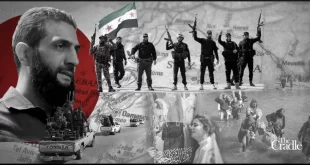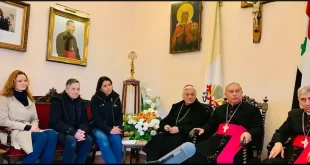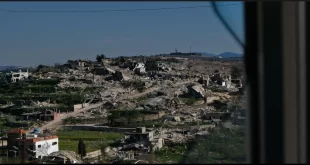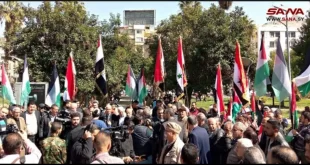The following article is reprinted from South Front:
After over 8 years of war, the province of Idlib and its surrounding areas remain the key stronghold of radical militant groups in Syria. Over the past years, anti-government armed groups suffered a series of defeats across the country and withdrew towards northwestern Syria. The decision of the Syrian Army to allow encircled militants to withdraw towards Idlib enabled the rescue of thousands of civilians, who were being used by them as human shields in such areas as Aleppo city and Eastern Ghouta. At the same time, this increased significantly the already high concentration of militants in Greater Idlib turning it into a hotbed of radicalism and terrorism.
The ensuing attempts to separate the radicals from the so-called moderate opposition and then to neutralize them, which took place within the framework of the Astana format involving Turkey, Syria, Iran and Russia, made no progress. A network of Turkish and Russian observation posts along the contact line and the demilitarized zone agreement did not allow a proper ceasefire to be established at the contact line between the government-controlled area and the militant-controlled territories. The August 2019 advance of the Syrian Army in northern Hama and southern Idlib led to the liberation of a large chunk of territory from the militants. However, strategically, the situation remained the same.
Idlib serves as home to a number of militant groups, who are engaged in constant competition for influence and resources. The most notable of these are:
- Hayat Tahrir al-Sham (formerly Jabhat al-Nusra, the Syrian branch of al-Qaeda) – the most influential group in Greater Idlib.
- The National Front for Liberation – a Turkish-backed militant alliance created around Ahrar al-Sham to be an alternative power to Hayat Tahrir al-Sham and promote Turkish interests in this part of Syria.
- The Turkistan Islamic Party – an al-Qaeda-linked militant group founded by foreign jihadists, mainly Uighurs. The key ally of Hayat Tahrir al-Sham.
- Hurras al-Din – the pro-al-Qaeda militant group allied with Hayat Tahrir al-Sham. Hurras al-Din’s main difference from its Big Brother is that it makes no attempt to hide its existing links to al-Qaeda.
Different sources provide different numbers regarding the manpower of militant groups operating in Idlib. The armed groups themselves provide contradictory and exaggerated numbers of their members to boost their popularity, intimidate rival factions and get additional funding from foreign sponsors.
In 2018, U.S. Joint Chiefs Chairman General Joseph Dunford estimated that there were 20,000 or 30,000 militants inside Idlib. In 2019, the UN estimated that there were 20,000 fighters associated with Hayat Tahrir al-Sham (HTS) in Idlib. Sources linked with militants say that HTS has about 31,000 members. The same sources say that the total number of militants in Idlib is about 60,000. Most of the weapons and ammunition depots, tunnel networks, repair facilities, HQs and other infrastructure objects used by the militants are located in the countryside of the city of Idlib, and the towns of Saraqib and Maarrat al-Numan. Militants locate them near civilian areas intentionally, using the people living there as human shields.
Despite the observed diversity, no group seems able to challenge HTS dominance. In the period from 2016 to 2019, the group undertook active efforts to consolidate its military, political and economic control of the region. Competing factions were absorbed or just forced to accept the rules established by Hayat Tahir al-Sham. The Turkish-backed National Front for Liberation, created in May 2018, was unable to challenge the HTS expansion and had to be satisfied with the role of junior partner.
In 2017, Hayat Tahir al-Sham created the Syrian Salvation Government to administrate the territory of Greater Idlib. The Salvation Government includes eight ministries: interior, justice, religious endowments, health, education, local administration and services, economy, development, and social affairs. It also has its own police force which, however, has limited responsibilities such as managing traffic, catching criminals, and solving disputes. Nonetheless, any notable security efforts in the area, like cracking down on ISIS cells which have pretty complicated relations with mainstream Idlib militants, always involve HTS forces.
All this has allowed HTS to take a grip of the region’s economy, controlling all key roads (primarily the M5 highway) and trade crossings – both with Turkey and across the frontline into government-controlled areas. When the Al-Ais crossing in Aleppo province was open, HTS was collecting taxes on those driving in and out of Idlib. The group also collects taxes from people that want to leave the Idlib zone via humanitarian corridors opened by the Damascus government with help from the Russian Military Police.
The major source of income is the Bab al-Hawa crossing with Turkey. HTS has imposed fees on all goods entering Idlib. These include clothes, food, fuel and its derivatives. HTS established strong ties with a wide network of traders, and reportedly has links even with the Watad Petroleum Company, which holds the monopoly on importing hydrocarbons from Turkey. Additionally, militants raise money through direct and indirect taxes imposed on business, shadow schemes of money transfer and currency exchangers. Businesses are obliged to comply with these conditions to ensure they can continue operating. The control over the flow of funds, fuel and repair parts allows HTS to be the most well-equipped and well-armed formation in Idlib, with the biggest fleet of heavy military equipment.
According to existing data, a part of HTS financing comes from external sources. Most the funding came from the charitable Salafi foundations in Kuwait, Qatar, Saudi Arabia, and from high-ranking clerics and wealthy businesspeople in Jordan and Turkey who sympathize with the ideas of Salafi Islam. Experts estimate that the flow from foreign sources decreased after the conflict in Syria entered a relatively low intensity phase in 2018. The flow of finances collected by armed groups through crowdfunding on social networks also decreased for the same reason. Therefore, HTS and other groups have been forced to rely more and more on local financial sources.
Before the conflict, the province of Idlib had a population of 1.5 million people. The UN says that some 3 million people currently live in Idlib. Most of them are Sunni Arabs, some are Syrian Turkomans protected by Turkey. Most of the members of other ethnic and religious communities (like Shias or Christians) were forced to flee from the area or were murdered by radicals controlling the area. Reports speculate that about 40% of the people now living in Greater Idlib come from other previously militant-held areas. These are current and former members of militant groups, their families and relatives. These predetermined the position of Idlib as the main hotbed of terrorism in the modern Syria.
From the political point of view, the vast majority of the leadership of the Idlib militant groups and the entities affiliated with them align their policies with the attitude of Turkey. Publicly, they declare that the main goal of their efforts is the victory of the so-called Syrian Revolution and the reformation of the Syrian governance system under Sharia law. Nonetheless, these claims are just a formal part of the militants’ official propaganda. The actions of HTS and its allied groups during the past years demonstrate that they are in fact seeking to create a de-facto independent quasi-state under their own control and as a partial protectorate of Turkey. If the current situation in northwestern Syria would remain the same over the next 3-5 years, there is a high chance that Turkey would be trapped in conditions in which it would have to try to annex this territory. Thus, the Idlib radicals would achieve their main goal.
The irony is that HTS and its allies are by their own policies preventing this scenario. In the current conditions, the Idlib zone is a constant source of terrorist threats and instability. In all previous cases when Syrian and pro-Syrian forces ceased their offensive operations and started unilaterally fulfilling ceasefire agreements, Idlib armed groups immediately started making attempts to seize new areas, attack pro-government forces and prepare terrorist operations within the government-controlled area. Furthermore, the Idlib zone is the area where the most murderous part of the so-called opposition is concentrated. The core of the ‘Idlib opposition’ is made up of mercenaries, criminal gangs and radicals. It is not expected that the unilateral ceasefire declared by the Syrian Army in southern Idlib on August 31 will last for long. In the first half of September, militants already conducted several armed unmanned aerial vehicle attacks targeting positions of the Syrian Army and even Russia’s Hmeimim airbase.
Turkey is keen to prevent any possible advances of the government forces in Idlib. Therefore it supports further diplomatic cooperation with Russia and Iran to promote a ‘non-military’ solution of the issue. However it does not seem to have enough influence with the Idlib militant groups, in particular HTS, to impose a ceasefire on them at the present time. Ankara could take control of the situation, but it would need a year or two that it does not have. Therefore, a new round of military escalation in the Idlib zone should not be very long in coming.
 Syria Support Movement solidarity with the Syrian people
Syria Support Movement solidarity with the Syrian people




